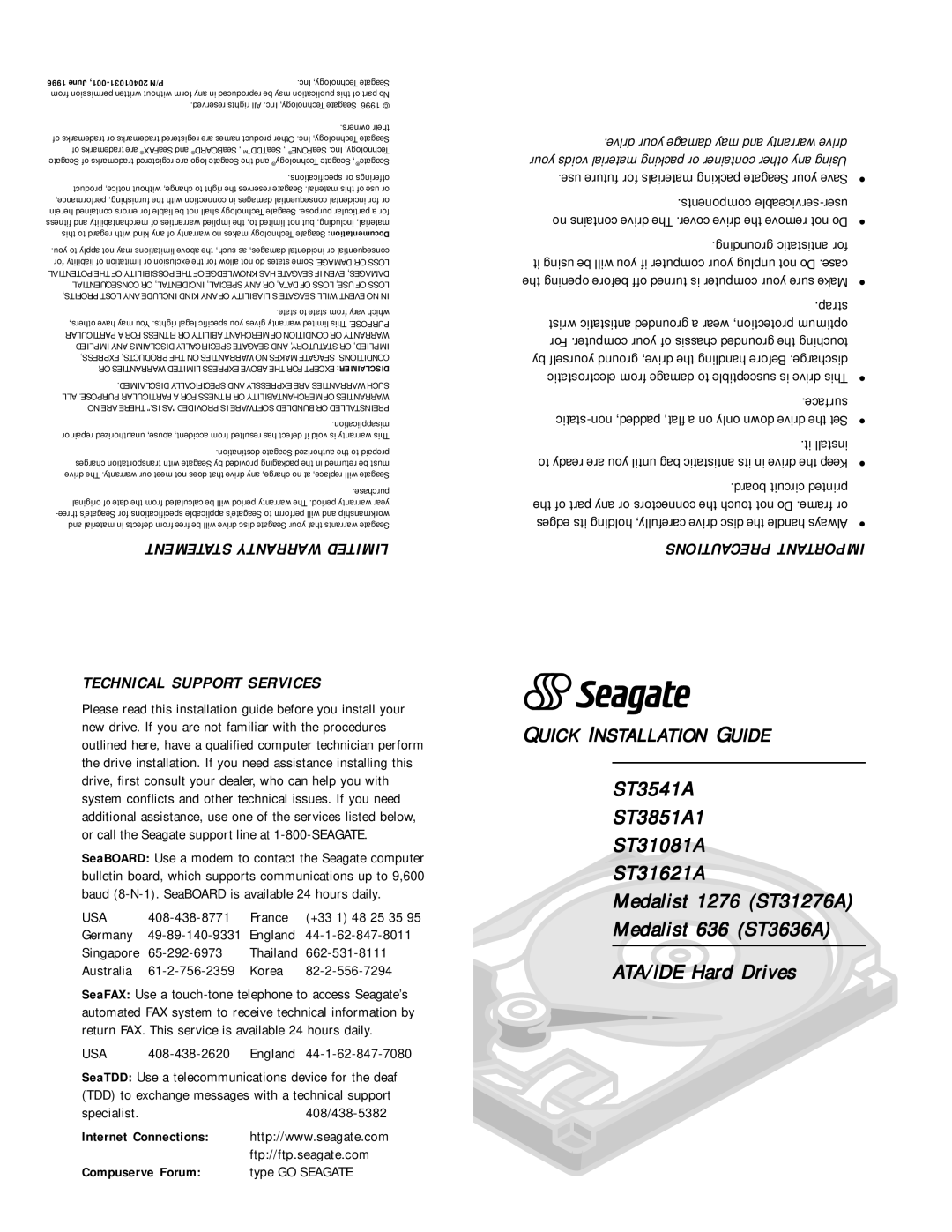ST3541A, ST3851A1, MEDALIST 1276 (ST31276A), MEDALIST 636 (ST3636A), ST31621A specifications
The Seagate ST3541A, ST31081A, ST316221A, and ST3851A1 are notable hard disk drives that played significant roles in the evolution of data storage technologies. Each of these models showcases key features and advancements suited for their respective eras.The Seagate ST3541A, released in the early 1990s, was a 5.25-inch form factor drive that offered a storage capacity of 540 MB. It utilized a SCSI interface, which was optimal for high-performance applications at the time. The ST3541A operated at a spindle speed of 3,600 RPM, delivering reasonable data transfer rates for its generation. One of the standout features was its use of advanced magnetic recording technology, which improved data density and reliability. The drive also incorporated error correction algorithms, enhancing its data integrity for system-critical environments.
Moving on to the ST31081A, this drive marked a significant upgrade in storage capacity, featuring an 8.4 GB capacity. It also used a SCSI interface, catering to server and high-demand computer environments. Designed for performance, the ST31081A operated at a higher spindle speed of 5,400 RPM. This increase in speed allowed for faster data access and improved overall system performance. Additionally, the ST31081A implemented Seagate’s innovative Dynamic Data Rate (DDR) technology, which optimized the read/write operations.
The Seagate ST316221A, launched in the late 1990s, represented a leap in storage technology with its 16.6 GB capacity. This drive utilized an ATA/66 interface, accommodating the needs of emerging personal computers and workstations. At 5,400 RPM, it maintained a balance between performance and power consumption. Its features included an integrated shock sensor, which helped protect data during unexpected movement. The ST316221A also had improved caching mechanisms, facilitating faster data retrieval.
Lastly, the ST3851A1, introduced around the same time, was designed primarily for enterprise environments. With a robust 8.4 GB capacity and an emphasis on reliability, this drive featured enhanced error recovery protocols. It operated at a spindle speed of 7,200 RPM, making it suitable for applications that demanded high throughput and robustness. The ST3851A1 was also noteworthy for its noise reduction technology, which ensured quieter operation in data centers.
In summary, the Seagate ST3541A, ST31081A, ST316221A, and ST3851A1 drives exemplify the rapid advancements in hard disk technology throughout the 1990s. Their unique features, including varying capacities, interfaces, and technologies, reflect the evolving demands for faster, more reliable data storage solutions that laid the foundation for future innovations in the industry.

